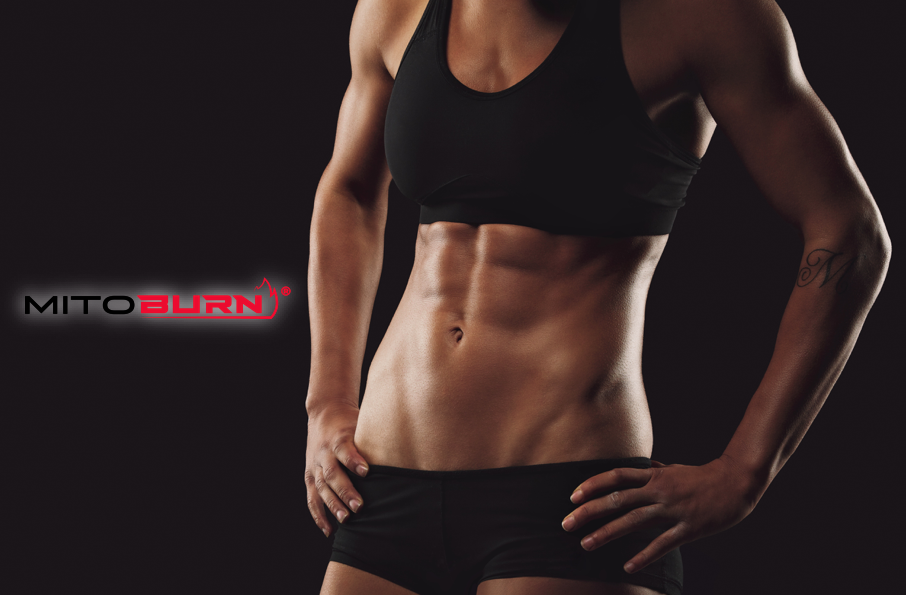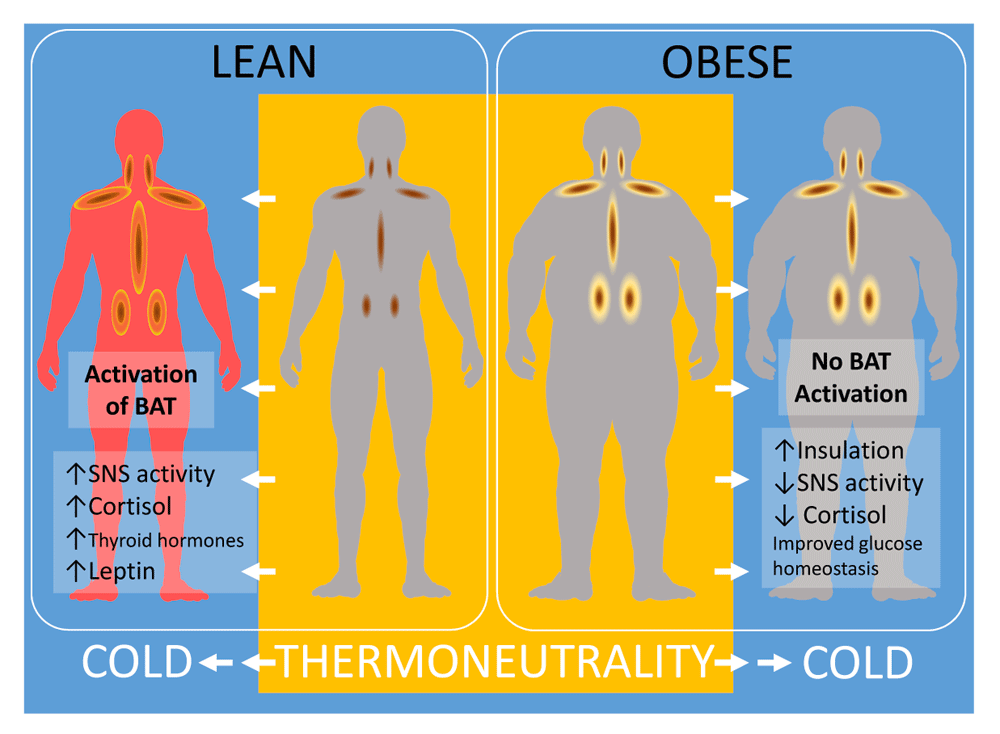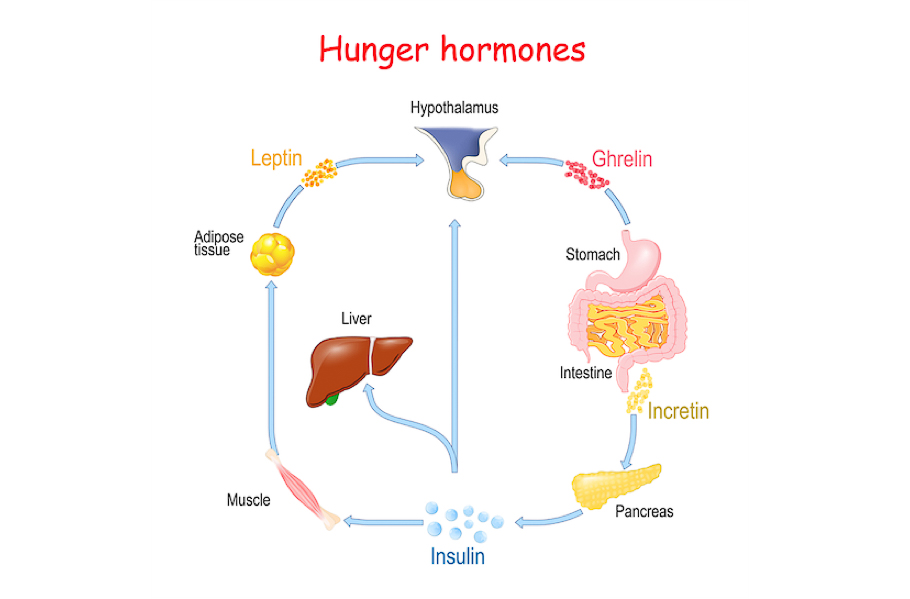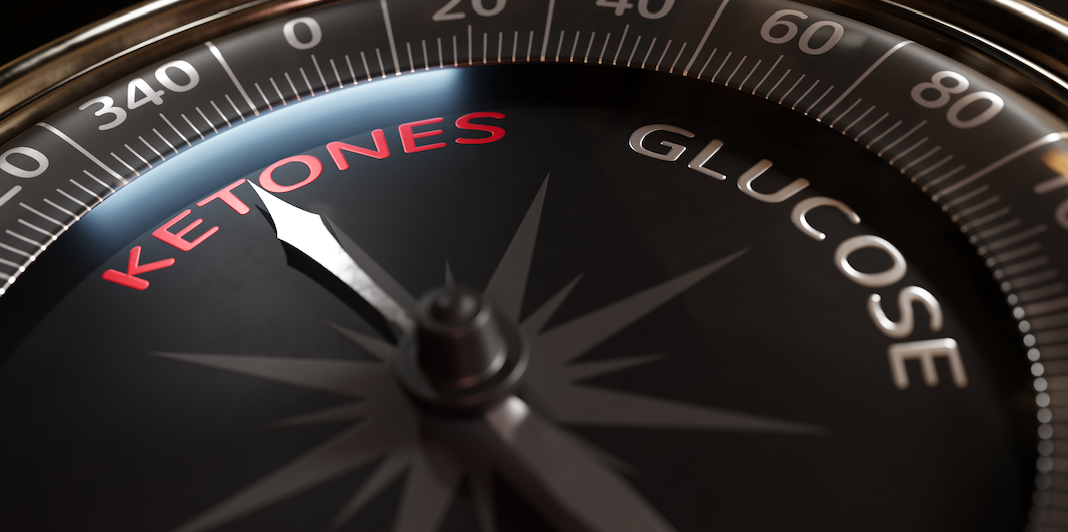Lose Body Fat with MitoBurn BAIBA

The supplement industry is always looking for its next magic bullet: a pill that can result in massive effects with little work or effort. The hunt for the next biochemical pathway that can be regulated by a unique plant compound or extract that can result in weight loss, fat loss or a change in body composition is often the centre of much scientific research. Although there are many identified “weight loss” compounds, few deliver on their benefits, while others work but with undesirable side effects. Enter a new compound with promising results. BAIBA (also known as b-aminoisobutyric acid) has been identified in humans as well as in nature. BAIBA is a promising novel myokine compound that has been shown to increase energy expenditure, reduce body weight, improve body composition and improve insulin resistance. Read on to find out what exactly BAIBA is, how it works and the research behind this promising new metabolic compound that can help you lose fat.
What is BAIBA?
 BAIBA is a short non-protein amino acid by-product of the breakdown of the amino acids valine and thymine.1 This breakdown occurs in skeletal muscle during exercise via a biochemical mechanism called peroxisome proliferator-activated receptor gamma co-activator 1-alpha (PGC-1a) dependent mechanism.1 Because BAIBA is secreted by muscle cells, BAIBA is called a “myokine,” and because it’s upregulated in response to exercise, it’s also referred to by scientists as an “exercise factor,” and it’s a very powerful one that’s used as a signalling factor in the body.
BAIBA is a short non-protein amino acid by-product of the breakdown of the amino acids valine and thymine.1 This breakdown occurs in skeletal muscle during exercise via a biochemical mechanism called peroxisome proliferator-activated receptor gamma co-activator 1-alpha (PGC-1a) dependent mechanism.1 Because BAIBA is secreted by muscle cells, BAIBA is called a “myokine,” and because it’s upregulated in response to exercise, it’s also referred to by scientists as an “exercise factor,” and it’s a very powerful one that’s used as a signalling factor in the body.
Exercise Increases PGC-1a, PGC-1a Increases BAIBA
PGC-1a is a protein that is increased during and after exercise and controls a set of metabolic pathways in skeletal muscle, partly regulating the adaptive response of muscle to exercise, including increasing development of mitochondria, regulating blood pressure and cholesterol, increasing fat burning via free fatty acid (FFA) b-oxidation and switching muscle fibres to more oxidative types. Essentially, PGC-1a activity is restricted to muscle tissue, so it uses myokines such as BAIBA to perform in other areas of the body. Exercise increases PGC-1a, and PGC-1a increases BAIBA. Brown Adipose Tissue
Brown Adipose Tissue
Brown adipose tissue (BAT) is a special type of body fat located between the shoulder blades, surrounding the kidneys, the neck, the supraclavicular area and along the spinal cord. Babies are born with roughly 5 percent of their body fat consisting of BAT, and scientists believe this is “switched on” as a survival mechanism during periods of extreme cold temperatures to avoid hypothermia. As you get older, your levels of BAT decrease but never fully go away. The more BAT your body has, the more efficient your body will be at burning fat to create heat (a process called thermogenesis) during times of need. It’s for this reason that brown fat has generated a huge amount of interest among weight-loss researchers. We know what your next question is: How can we develop higher levels of BAT or at least activate the BAT we have?
Increasing BAT with BAIBA
Exercise has been shown to stimulate the hormones that activate brown adipose tissue, which is one of the ways you lose fat by doing cardio. Certain medications such as ephedrine, clenbuterol and several others have also been shown to increase BAT activity but carry with them various side effects, which is why they are banned for use by most sports organizations and face other legal restrictions. But what’s fascinating is that BAIBA is a natural substance that’s been found to regulate the “browning” of traditional body fat to help you produce more BAT. This plays a critical role in how many calories you burn each day (energy expenditure), body weight regulation and improvement of diet-induced insulin resistance. On its own, BAIBA also improves insulin sensitivity, reduces “bad” LDL cholesterol and protects against diet-induced obesity by regulating lipid and carbohydrate metabolism. In humans, research has shown that BAIBA concentrations are increased with exercise and inversely associated with metabolic risk factors, making it a good candidate for the treatment of metabolic disease, fat loss and overall weight loss.2
The Biochemistry of BAIBA
The biochemistry of BAIBA isn’t a simple one. First, BAIBA has two enantiomers or forms in the body: D-BAIBA and L-BAIBA.2 An enantiomer is one of two isomers that are mirror images of each other, just like your right and left hands or feet. Both are hands and feet, but they’re shaped to be a “left” or a “right,” which are really “opposites” of each other (shapewise). The “L” form is the granddaddy of the two forms of BAIBA; read on to find out why. 
L-BAIBA vs. D-BAIBA
D-BAIBA is produced in the cytosol from thymine degradation in a metabolic pathway, which is further metabolized in the mitochondria, the powerhouse cell, in another biochemical pathway.
L-BAIBA comes from a mitochondrial reaction that breaks down or catabolizes the branched-chain amino acid valine. Mitochondrial enzymes that are expressed in th e brain, kidney, liver and muscles catalyze production and degradation of L-BAIBA and D-BAIBA. Additionally, it has been shown that some of L-BAIBA can be converted to D-BAIBA and vice versa. One limited drawback of current research on BAIBA is that most studies use a racemic mixture of both L-BAIBA and D-BAIBA. But prominent sports supplement researchers believe that the “L” form (L-BAIBA) is the superior chemical form because it’s created via valine oxidation during muscle contractions.
e brain, kidney, liver and muscles catalyze production and degradation of L-BAIBA and D-BAIBA. Additionally, it has been shown that some of L-BAIBA can be converted to D-BAIBA and vice versa. One limited drawback of current research on BAIBA is that most studies use a racemic mixture of both L-BAIBA and D-BAIBA. But prominent sports supplement researchers believe that the “L” form (L-BAIBA) is the superior chemical form because it’s created via valine oxidation during muscle contractions.
NNB Nutrition L-BAIBA Helps Convert WAT to BAT
 The body has two types of fat: white adipose tissue (WAT) and brown adipose tissue (BAT). WAT is where the body stores fat, but BAT is where the body burns fat. BAT is a metabolically active thermogenic fat that increases energy expenditure in order to raise body temperature. Activating BAT is therefore highly favourable when it comes to fat loss. In addition, BAT activation has been found to inhibit formation of WAT and even transform WAT into BAT.
The body has two types of fat: white adipose tissue (WAT) and brown adipose tissue (BAT). WAT is where the body stores fat, but BAT is where the body burns fat. BAT is a metabolically active thermogenic fat that increases energy expenditure in order to raise body temperature. Activating BAT is therefore highly favourable when it comes to fat loss. In addition, BAT activation has been found to inhibit formation of WAT and even transform WAT into BAT.
BAIBA has been shown to stimulate differentiation of WAT to BAT under in vivo and in vitro conditions in human pluripotent stem cells.1 BAIBA was found to induce gene expression of mitochondrial uncoupling protein (UCP-1) via PGC-1a, as well as through the respiratory chain protein cytochrome c to differentiate adipocytes. These effects were dependent on activation of another receptor PPARa, a transcription activator of FFA oxidation and BAT metabolism.3 Increased FFA oxidation, along with ATP production efficiency via UCP-1, may be the reason for decreased body fat accumulation via BAIBA.
 Expression of UCP-1 in brown adipocyte-specific genes present in WAT can be increased via exercise and specific activity factor expression. To examine if BAIBA could induce expression of brown adipocyte-specific genes in WAT, mice were treated with 100 mg/kg/day or 170 mg/kg/day of BAIBA via drinking water for 2 weeks.1 The study found that BAIBA could increase UCP-1 expression in a dose-dependent manner.
Expression of UCP-1 in brown adipocyte-specific genes present in WAT can be increased via exercise and specific activity factor expression. To examine if BAIBA could induce expression of brown adipocyte-specific genes in WAT, mice were treated with 100 mg/kg/day or 170 mg/kg/day of BAIBA via drinking water for 2 weeks.1 The study found that BAIBA could increase UCP-1 expression in a dose-dependent manner.
Further to this, mice were treated again with either BAIBA 100 mg/kg/day or untreated and their weight was monitored weekly. Researchers found that BAIBA treatment significantly decreased body fat in mice (untreated control = 13.1 percent body fat +/- 1.25 percent versus BAIBA = 9 percent body fat +/- 0.92 percent) and reduced the gain of body fat mass in mice fed a standard diet without altering food consumption. The study also showed that BAIBA was able to induce fat loss via mechanisms not involving satiety.
NNB Nutrition L-BAIBA (MitoBurn) & Leptin Resistance
 Leptin is a satiety hormone and an energy-sensing hormone. Low levels of leptin can increase the risk of being overweight and developing other metabolic disorders linked to calorie overconsumption. When leptin resistance or desensitization occurs, the leptin receptors in the brain stop working. The result is that instead of feeling satiated and full, the body constantly feels hungry! BAIBA has been investigated as an option for enhancing plasma leptin levels in mice. In one study, mice were divided into three groups: totally deficient in leptin (ob/ob) mice, wild-type (+/+) mice and partially deficient in leptin (ob/+) mice.4
Leptin is a satiety hormone and an energy-sensing hormone. Low levels of leptin can increase the risk of being overweight and developing other metabolic disorders linked to calorie overconsumption. When leptin resistance or desensitization occurs, the leptin receptors in the brain stop working. The result is that instead of feeling satiated and full, the body constantly feels hungry! BAIBA has been investigated as an option for enhancing plasma leptin levels in mice. In one study, mice were divided into three groups: totally deficient in leptin (ob/ob) mice, wild-type (+/+) mice and partially deficient in leptin (ob/+) mice.4
BAIBA was administered for 4 months in each of the mice groups. In the totally deficient leptin mice, BAIBA was unable to limit body fat mass but reduced inflammation and liver cytolysis. In partially deficient leptin mice that were fed a high calorie diet, BAIBA fully prevented or limited the gain of body fat, improved glucose intolerance and hypertriglyceridemia, along with experiencing other improvements in metabolic abnormalities associated with being overweight. In addition, carnitine palmitoyltransferase-1 was augmented in liver and WAT. BAIBA also reduced body fat mass by 40 percent in partially deficient leptin mice and lowered body fat by 27 percent in wild type mice fed the same high-calorie diet.
These favourable effects of BAIBA in partially deficient mice were associated with a restoration of plasma leptin levels but not in normal mice. Thus, BAIBA could limit fat accumulation through a leptin‐dependent mechanism. As partial leptin deficiency isn’t uncommon in the general population, supplementation with BAIBA may help to prevent diet‐induced obesity and related metabolic disorders with low leptin.
NNB Nutrition L-BAIBA (MitoBurn) & Exercise
 The relationship between BAIBA and exercise was shown in the ongoing Framingham Heart Study, where participants who were put on an exercise program had higher levels of BAIBA as well as improved levels of cholesterol and lowered glucose levels. Exercise increases b-oxidation in liver and muscle tissue. b-oxidation is the primary mechanism of fatty acid oxidation. Fatty acid oxidation is the decomposition of glycerol and fatty acids produced by oil and fat under the condition of sufficient oxygen supply to produce carbon dioxide, water and a large amount of energy for the body to use.
The relationship between BAIBA and exercise was shown in the ongoing Framingham Heart Study, where participants who were put on an exercise program had higher levels of BAIBA as well as improved levels of cholesterol and lowered glucose levels. Exercise increases b-oxidation in liver and muscle tissue. b-oxidation is the primary mechanism of fatty acid oxidation. Fatty acid oxidation is the decomposition of glycerol and fatty acids produced by oil and fat under the condition of sufficient oxygen supply to produce carbon dioxide, water and a large amount of energy for the body to use.
In one study, BAIBA was found to directly induce b-oxidation gene expression in liver cells in vitro and in vivo.1 The study showed that BAIBA increases hepatic fatty acid oxidation gene expression through a PPAR-a dependent mechanism. BAIBA treatment significantly and dose-dependently increased the maximal oxygen consumption rate of liver cells. This shows that BAIBA induces transcriptional change in hepatocytes, leading to a more oxidative phenotype.
NNB Nutrition L-BAIBA (MitoBurn) & Ketones
 Ketones are an alternative energy source that is produced in response to low levels of the body’s primary energy source, glucose. Ketones can provide energy to the brain during carbohydrate restriction and help increase fatty acid oxidation. Ketones produced because of fatty acid oxidation are acetoacetic acid, β-hydroxybutyric acid and acetone, all of which are collectively referred to as ketone bodies.
Ketones are an alternative energy source that is produced in response to low levels of the body’s primary energy source, glucose. Ketones can provide energy to the brain during carbohydrate restriction and help increase fatty acid oxidation. Ketones produced because of fatty acid oxidation are acetoacetic acid, β-hydroxybutyric acid and acetone, all of which are collectively referred to as ketone bodies.
One study found that 100 mg/kg/day of BAIBA after 6 weeks in mice resulted in significantly increased β-hydroxybutyrate and decreased the expected body fat gain and body weight gain after 2 weeks of persistent treatment.5 Another study on mice treated with BAIBA (10 or 100 mg/kg/day) for 2 weeks found that BAIBA at 100 mg/kg/day increased ketone bodies by 64 percent, with a 64 percent increase in acetoacetate and a 64 percent increase in β-hydroxybutyrate.6
NNB Nutrition L-BAIBA (MitoBurn) & Blood Glucose Control
In a study that evaluated BAIBA and BAT in mice, an intra-peritoneal glucose tolerance test (IPGTT) was performed. An IPGTT detects glucose balance. BAIBA was found to significantly improve glucose tolerance in the mice.1 Another study looked at the effects of BAIBA in mice fed a high-fat diet (HFD) for 8 weeks, induced insulin resistance as mediated through a signaling pathway involving AMP-activated protein kinase (AMPK) and peroxisome proliferator-activated receptor d (PPARd).7
 The study examined the effects of BAIBA on glucose tolerance and insulin sensitivity using an IPGTT. The results showed that the HFD significantly impaired glucose tolerance and increased insulin resistance compared with a normal diet. BAIBA treatment significantly improved HFD-induced glucose tolerance and insulin resistance. In addition, BAIBA significantly decreased the HFD-induced increase in body weight and the treatment did not affect food intake represented by energy intake.
The study examined the effects of BAIBA on glucose tolerance and insulin sensitivity using an IPGTT. The results showed that the HFD significantly impaired glucose tolerance and increased insulin resistance compared with a normal diet. BAIBA treatment significantly improved HFD-induced glucose tolerance and insulin resistance. In addition, BAIBA significantly decreased the HFD-induced increase in body weight and the treatment did not affect food intake represented by energy intake.
NNB Nutrition L-BAIBA (MitoBurn) on Bone & Muscle Loss
Aging results in the loss of bone and muscle. BAIBA may have an osteocyte-protective factor. A recent study found that BAIBA prevents osteocyte cell death induced by reactive oxygen species (ROS) and can help protect against bone and muscle loss.8 In this study, BAIBA added to drinking water prevented bone loss and loss of muscle function in the hind limbs of mice in a model of osteocyte apoptosis. The protective effect of BAIBA was lost with aging because of loss of muscle capacity to produce BAIBA. In a nutshell, BAIBA maintains osteocyte viability (bone health) by preventing mitochondrial breakdown from ROS.
Safety of NNB Nutrition L-BAIBA (MitoBurn)
 Although the research isn’t out yet showing whether BAIBA can have the same impacts in humans, there’s enough evidence to suggest that BAIBA is a powerful regulator of metabolism in humans and could have a similar impact as exercise does on the body. Anecdotal research seems to confirm this, as users have noticed significant fat loss when using BAIBA. It’s for this reason that many of the top fat burners, GDAs and other sports supplements have begun adding BAIBA by NNB Nutrition to their formulas.
Although the research isn’t out yet showing whether BAIBA can have the same impacts in humans, there’s enough evidence to suggest that BAIBA is a powerful regulator of metabolism in humans and could have a similar impact as exercise does on the body. Anecdotal research seems to confirm this, as users have noticed significant fat loss when using BAIBA. It’s for this reason that many of the top fat burners, GDAs and other sports supplements have begun adding BAIBA by NNB Nutrition to their formulas.
BAIBA seems to hold promise for reducing body fat gain, increasing b-oxidation or fat burning, lowering bad cholesterol levels, improving insulin sensitivity and glucose tolerance, increasing ketone production, reducing the inflammatory response brought on by weight gain, providing protective effects for bone and having effects on satiating factors such as leptin.
Current research suggests that toxicity of BAIBA appears to be very low. Many studies on mice given high doses of 100 mg/kg/day of BAIBA supplied in drinking water found favourable positive outcomes.
NNB Nutrition has seen the potential of BAIBA for its various effects on metabolism and has performed an acute oral toxicity test showing that the median lethal dose (LD50) of L-BAIBA was greater than 2000 milligrams per kilogram of body weight in female Sprague Dawley rats, and that there were no mortality or adverse clinical side effects.
Formulating with NNB Nutrition L-BAIBA (MitoBurn)
Based on these positive and promising results of BAIBA, NNB Nutrition offering BAIBA as a raw material ingredient under the brand name MitoBurn. NNB’s MitoBurn provides the L-isomer of BAIBA (L-BAIBA), which is considered more biologically active than the D-isomer (D-BAIBA), making it far more potent. Increased levels of L-BAIBA have also been associated with other exercise benefits.
 This unique ingredient comes in fine white powder that’s stable in aqueous solutions and also perfect for encapsulation or powder. MitoBurn can be formulated in pre-workouts, weight-loss, ketone and fat-loss products as well as recovery, post-workout and even anti-aging health products. NNB Nutrition suggests using 1 to 2 servings per day of 500 to 750 milligrams per serving prior to exercise. This works well as a stand-alone ingredient or as part of a stack for even better fat-loss results.
This unique ingredient comes in fine white powder that’s stable in aqueous solutions and also perfect for encapsulation or powder. MitoBurn can be formulated in pre-workouts, weight-loss, ketone and fat-loss products as well as recovery, post-workout and even anti-aging health products. NNB Nutrition suggests using 1 to 2 servings per day of 500 to 750 milligrams per serving prior to exercise. This works well as a stand-alone ingredient or as part of a stack for even better fat-loss results.
 To learn more about MitoBurn L-BAIBA and all the other unique ingredient innovations from NNB Nutrition, visit www.nnbnutrition.com
To learn more about MitoBurn L-BAIBA and all the other unique ingredient innovations from NNB Nutrition, visit www.nnbnutrition.com
- Roberts, et al. b-Aminoisobutyric acid induces browning of white fat and hepatic b-oxidation and is inversely correlated with cardiometabolic risk factors. Cell Met. 2014. 19(1): 96-108.
- Tanianskii DA, et al. b-Aminoisobutyric acid as a novel regulator of carbohydrate and lipid metabolism. Nutrients. 2019. 11(3): 524.
- Desvergne B, et al. Transcriptional regulation of metabolism. Physiol Rev. 2006. 86(2): 465-514.
- Begriche K, et al. b-Aminoisobutyric acid prevents diet-induced obesity in mice with partial leptin deficiency. J Obesity. 2008. 16(9): 2053-67.
- Maisonneuve C, et al. Effects of zidovudine, stavudine and beta-aminoisobutyric acid on lipid homeostasis in mice: possible role in human fat wasting. Antivir Ther. 2004. 9(5): 801-10.
- Note R, et al. Mitochondrial and metabolic effects of nucleoside reserse transcriptase inhibitors (NRTIs) in mice receiving one of five single- and three dual-nrti treatments. Antimicrob Agents & Chemo. 2003. 47(11): 3384-92.
- Jung TW, et al. BAIBA attenuates insulin resistance and inflammation induced by palmitate or a high fat diet via an AMPK-PPARd-dependent pathway in mice. Diabetologia. 2015. 58(9): 2096-2105.
- Kitase Y, et al. b-aminoisobutyric acid, L-BAIBA, is a muscle-derived osteocyte survival factor. Cell Reports. 2018. 22(6): 1531-44.

